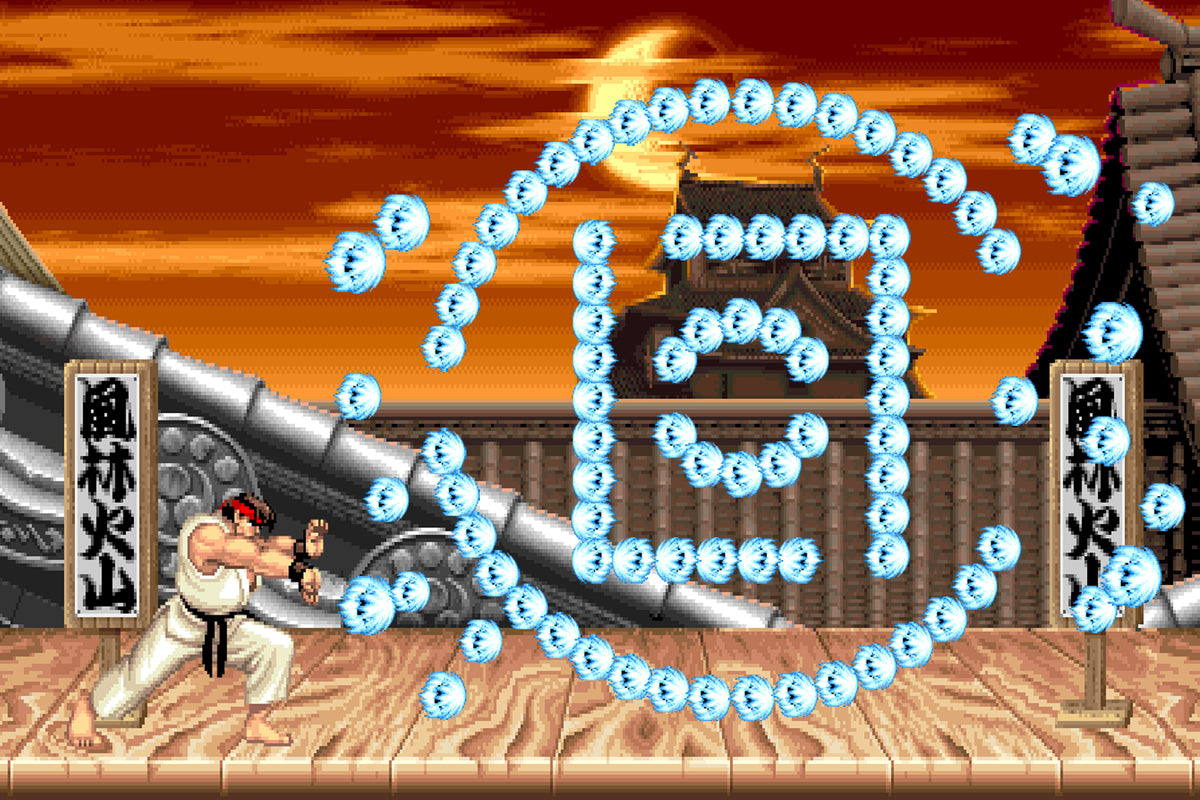
STREET FIGHTER™ II: THE KING OF THE ARCADES
“Round One. Fight!” A mere look at the text, and we could almost hear the sound effect coming from one of the most classic games we all grew up knowing: Street Fighter™ II. Debuted in 1991, this second installment of the Capcom franchise became a worldwide phenomenon that not only created a frenzy across the globe, but also set the standards for all fighting games that came out from then on. In short, Street Fighter™ II was the king of the arcades, with an influence that continues today.
While Street Fighter™ II was not the first 2P fighting game that existed, it was, without doubt, the first that truly created a competitive environment with its multiple play styles. From the extended line-up of distinctive character choices to the fun, exhilarating soundtrack, vivid visuals and animations that were passionately thought-out down to the pixel, and not to mention the accidental but celebrated creation of combos, all came together to give it a game-changing appeal even Capcom themselves struggled to emulate.
With Street Fighter™ II, the face of fighting games was changed in many ways, one of which came from the bug-turned-fight-game-staple: The combo. After switching out Street Fighter™’s double punch pads to a six-button control configuration, Street Fighter™ II introduced command-based special moves unique for each character, and a tweak that made it easier for players to execute the specials—a decision to let players focus on fighting strategies rather than the luck of nailing the timing. This modification led to a recovery time that is shorter than the opponent‘s flinch time, so as a result, players were able to string up multiple moves into a combo, accidentally achieving an even better effect than originally intended. Just like that, what was initially a bug went on to become a gameplay staple found in almost every game in the genre moving forward, that includes competitor franchises Tekken and Mortal Kombat back in the ‘90s, and fighting games today.

Only Ryu and Ken, with identity moves, were available for play before Street Fighter™ II. (pictured: special graphics on the CLOT x ARCADE1UP Hadouken Hoodie)
Character creations in Street Fighter™ II were so complex that everything was taken into account including the personal traits, backstories, even body measurements and blood type. Fei Long, for example, was born on 23 April 1969, and is a martial arts movie star from Hong Kong who does all his own stunts. His fight style is called Hitenryu, widely believed to be a form of Kung Fu based on Bruce Lee’s Jeet Kune Do.

Japanese arcade brochure for 1991's Street Fighter™ II: The World Warrior featuring the eight playable characters (clockwise from top left: Honda, Zangief, Ken, Blanka, Dhalsim, Ryu, Guile, and Chun-Li)
The line-up later expanded from eight to twelve in Street Fighter™ II' Championship Edition, when the bosses (Balrog, Vega, Sagat, and M. Bison) were made playable. Four more characters including the aforementioned Fei Long, Dee Jay, T. Hawk and Cammy joined the crew in Super Street Fighter™ II: The New Challengers, and a new selectable boss, Akuma, entered the scene in Super Street Fighter™ II Turbo.
 The four bosses Balrog, Vega, Sagat, and M. Bison were made playable in Street Fighter™ II' Championship Editon.
The four bosses Balrog, Vega, Sagat, and M. Bison were made playable in Street Fighter™ II' Championship Editon.
As new playable characters arrived with exciting new profiles, sound effects, ending screens and background details, the game itself also evolved with new improvements and features such as adjustable speed, in-game scoring system, super combos, air combos and many more. New techniques were continuously being discovered, making the Street Fighter™ II series ever more enticing.
With fighting styles that were unique for each character meant that the strategies for and against every one of them were, too, completely different. The game mechanics was continuously refined for improved balanced, offering a levelled playing field that motivated players to spend time to master their game plan. As you get better, your gaming experience evolve, making Street Fighter™ II as dynamic as it was addictive. The same can be said for both the players and viewers, as many recall Street Fighter™ II dominating the arcade, with crowds standing around watching the best players square off.
Street Fighter™ II took the world by storm right from the start; so successful that eight re-releases were made in the years that follow, eventually concluding with Ultra Street Fighter™ II: The Final Challengers in 1997. The influence of Street Fighter™ II spread far and wide, and even made its way into pop culture including comics, TV shows, movies, all the way to internet memes and, now, fashion.

Left and middle: Street Fighter™ II arcade machines from the '90s / far right: CLOT x ARCADE1UP Street Fighter™ II Big Blue arcade machine
Launching in a limited edition home cabinet with a range of streetwear classics to match, the CLOT and ARCADE1UP collaboration is an attempt to reignite the excitement towards this forever classic, and a hands-down tribute to Street Fighter™ II’s three decades of gaming glory.
The fully-licensed CLOT x ARCADE1UP Street Fighter™ II Big Blue Arcade Machine and CLOT x ARCADE1UP Street Fighter™ II apparel collection are both set to launch at select JUICE locations worldwide and online at JUICESTORE.COM on 8 April 2022. Follow our social media platforms for instant updates.

CLOT and ARCADE1UP have teamed up to bring us the ultimate Street Fighter™ II experience.
PRICE INFORMATION
The CLOT x ARCADE1UP Street Fighter™ II Big Blue Arcade Machine is priced at HKD 6,880 / RMB 5,880 / NT 29,800 / USD 850.
Prices for the CLOT x ARCADE1UP Street Fighter™ II capsule collection range from HKD 680 to HKD 1,380 / RMB 680 to RMB 1,380 / NT 2,980 to NT 5,980 / USD 88 to USD 178.
SELLING DOORS
JUICE CAUSEWAY BAY / JUICE K11 MUSEA / JUICE CENTRAL / JUICE CHENGDU IFS / JUICE GUANGZHOU/ JUICE TAIPEI / JUICE TAICHUNG / JUICE LOS ANGELES / WWW.JUICESTORE.TW / WWW.JUICESTOREUSA.COM / WWW.JUICESTORE.COM
COMING SOON
JUICE SHANGHAI (JULU ROAD)

